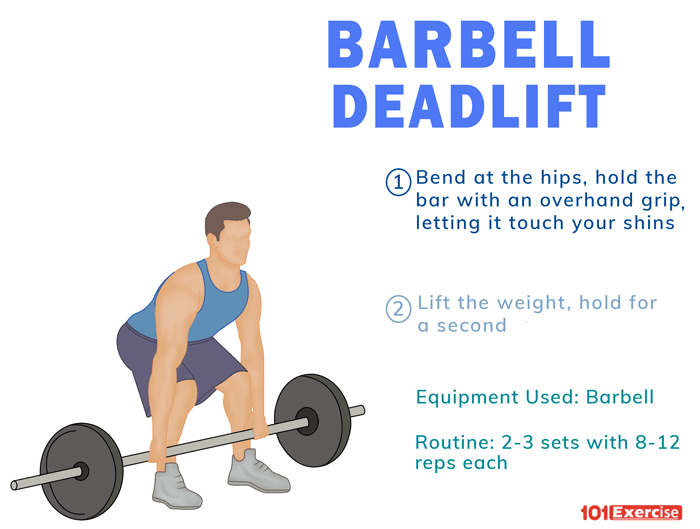Barbell Deadlift
- Alternative Names: Deadlift with a Barbell
- Type: Strength
- Experience Level: Intermediate
- Equipment: Barbell
- Muscles Targeted: Hamstrings, glutes, back, biceps
- Mechanics: Compound
- Average Number of Sets: 2-3 with 8-12 reps each
- Variations: Stiff-legged, and single-leg barbell deadlifts
- Alternative: None
The barbell deadlift is arguably one of the most effective lifting exercises used for developing core stability, working all the muscles of your posterior chain, and improving your grip strength. Trainers usually recommend it because it activates 28% more muscle fibers than hex-bar deadlifts and 20% more than glute raises.
Benefits
- Improves your posture by allowing you to keep your back straighter.
- Involves more muscles, including your lower and upper body.
- Prevents lower back and hamstring injuries by strengthening your muscles and supporting joints.
- Is safer than other weightlifting exercises and you do not need a spotter to do it.
Trap (Hex) Bar Vs Barbell Deadlifts
| Trap (Hex) Bar Deadlift | Barbell Deadlift |
| Allows you to bend the knees more | You bend your knees less to avoid putting too much stress on your back |
| You do it using a neutral grip | You perform it using either an overhand or a mixed grip |
| Good option for tall lifters because a trap bar has higher handles | Challenging for tall lifters because of the long levers |
How to do a Barbell Deadlift
Use barbells weighing about 150-250 for this, depending on your capacity and preference.
Deadlift with a Barbell Tips
- Make sure that your lower back is not rounded throughout the movement.
- Look forward and keep your eyes fixed to a specific spot on the floor to keep the head in a neutral position.
Variations
- Stiff-Legged Barbell Deadlift: Done by keeping your knees still and lowering the bar above your feet.
- Single-Leg Barbell Deadlift: Involves the same movement as the basic deadlift but with one foot lifted a few inches off the floor.
.

